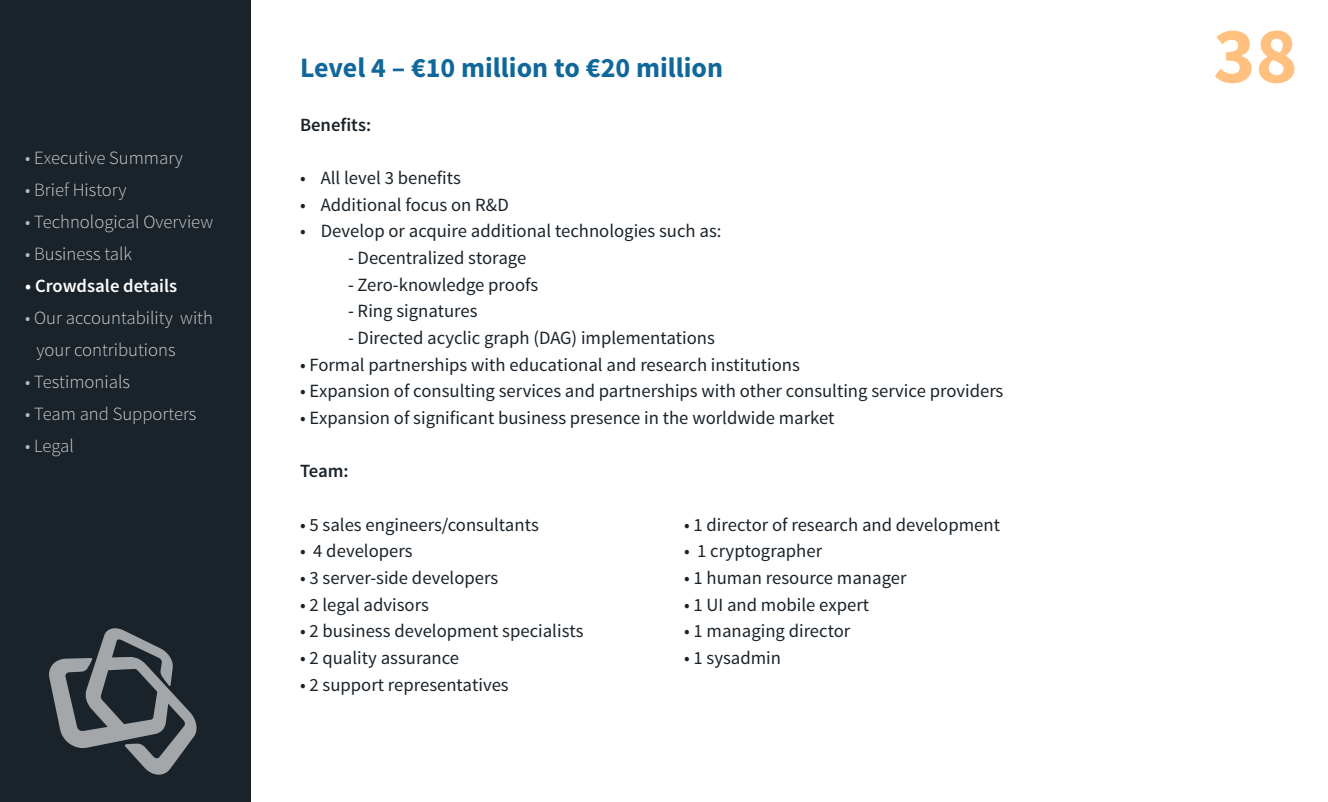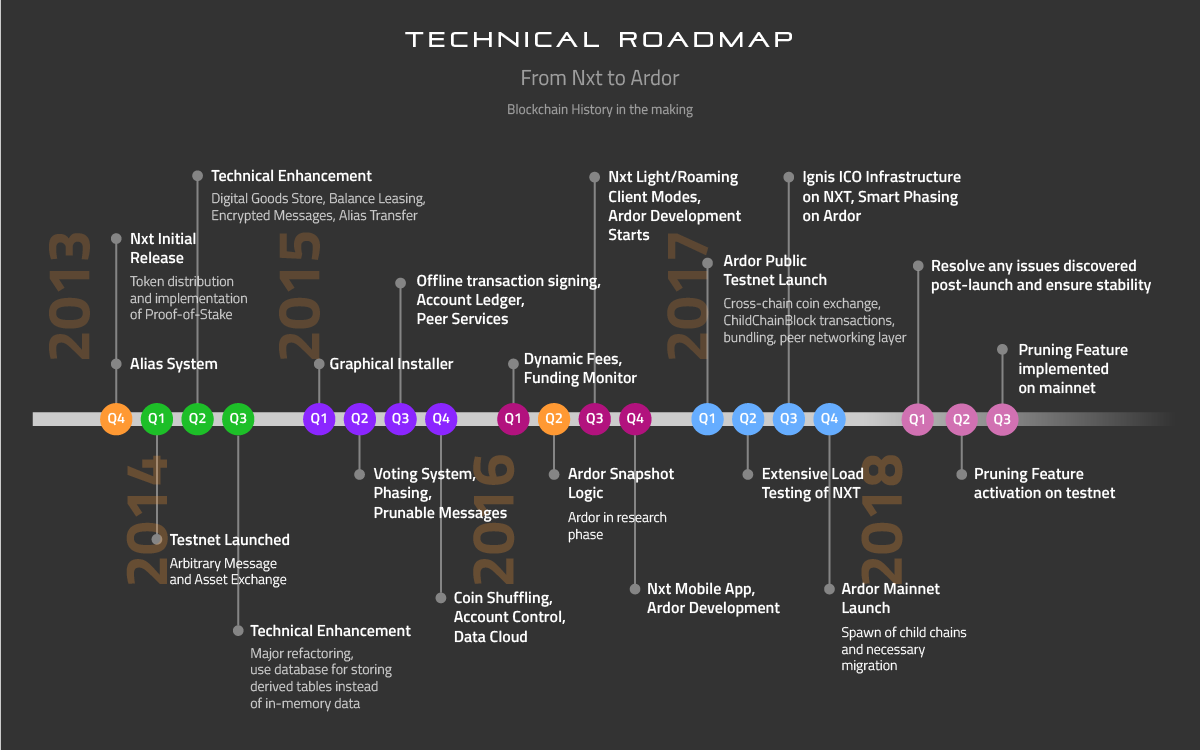Ardor is the next-generation blockchain-as-a-service platform from Jelurida B.V. If you’re new to Ardor, learn more about the company and Ardor as a product in our intro article, What is Ardor?.
Ardor as a Product
Ardor is a next-generation product that builds on the success of Jelurida’s first product, Nxt. It brings with it major learnings gleaned from a successful blockchain-as-a-service (BAAS) product that’s been on the market for the past 5 years.
Features that set Nxt and Ardor apart from related ecosystems are:
- The ability to share encrypted messages with 3rd parties
- Prunable data
- 40k data storage
- Account properties
- Phasing (Ardor adds +logic)
- Decentralized trading on its smart contracts
- Restricted tokens
- Voting
- Marketplace
- Coin shuffling anonymity
Additionally, Ardor sports advanced architectural features that make it unique from anything else on the market. These include:
- Parent/child architecture
- Separation of security token from operational token
- Transaction pruning
While Ethereum has the potential to mimic some of these unique features, currently Nxt and Ardor alone possess these technical abilities. For a more in-depth look at Ardor’s unique capabilities, read the ebook Ardor vs the Competition.
Child chains are a major differentiating factor that will make Ardor a BAAS par excellence due to its scalability potential and ability to relieve blockchain bloat.
As a proof-of-stake ecosystem, there is no mining involved. Security is provided hierarchically through the exclusive use of the parent chain token ARDR, while child chain tokens are purely for transactional value.
Ardor Roadmap
Ardor has had a productive 2017. In the evolution of their first product, Nxt, they kicked off the year with a number of key developmental goals in their pursuit to launch Ardor to market:
- Public testnet launch
- Ignis ICO
- Ardor mainnet launch
We look at the progression of each of these in turn.
Public Testnet Launch
Ardor’s public testnet launched in Q1 2017 and, since then, has been updated with a number of new release versions.
In November, new features were added in the form of asset control and composite phasing, deleting the current testnet at the time and starting from a new genesis block.
The current version was released just weeks ago and is considered the last significant testnet release. In anticipation of the upcoming mainnet launch at the start of 2018, all further releases will consist of security and critical bug patches only. No further changes will be made to the API.
With this update, source code was released to be reviewed under a temporary license, and the Node JS module and mobile app became operational.
Ignis ICO
Ignis will be the first child chain to be hosted on Ardor when it’s released to mainnet.
The 5th round of the Ignis ICO concluded in November and collected over US$15 million from its crowdsourced funding venture.

The remaining 500 IGNIS will be gifted by airdrop to existing NXT holders in the last week of December.
Mainnet Launch
The team has announced that Ardor’s mainnet will launch on January 1, 2018.
In late December, the Ardor genesis snapshot will be recorded. Exact block height will be announced one week in advance. The software will be released in the last days of 2017, but will only be operational from the start of the new year. The source code will be released under the JPL, and forging will not be possible as yet to allow for node setups and to finalise snapshot balance verification.
On January 1, the Ardor genesis block timestamp will be reached and the blockchain will become fully operational. Forging will start automatically.
What 2018 Holds for Ardor
Q1 2018
Q1 will focus on production stability, and the team will work to resolve any post-launch issues. The company will also onboard new developers, quality assurance, and a support team.
Q2 2018
In Q2, child chain transactions will be pruned and snapshot data will be shared between testnet nodes. Following Ignis, additional child chains will be launched on the mainnet. Features that don’t rely on the parent/child architecture chain will also be merged.
Q3 2018
Come Q3, mainnet will see the implementation of pruning and snapshotting, and child chain specific transaction types will be supported.
According to co-founder and managing director Lior Yaffe:
Jelurida’s vision is to become a one-stop shop for blockchain applications. As the team behind industry standards like proof-of-stake and pruning, we will use the funding we raised to add additional functionality to our flagship products NXT and Ardor and integrate or acquire other blockchain technologies.
In the short term, our focus is to release the Ardor MainNet on time and with high quality.
Final Thoughts
Jelurida B.V. is a results-oriented company. Their first BAAS product, Nxt, has been running commercially since 2013. With Ardor, they are improving on an already solid product that distinguishes itself as a top BAAS choice.
Now that they are nearing mainnet completion, they have recently announced a marketing strategy overhaul. Nxter Magazine, the startup’s online publication, is an excellent source of updates for both Nxt and Ardor. The company will also be maintaining a regular video channel, Ardor Time.
Ardor is easily undervalued, but for its already loyal supporters, there are clear wins on the way. With mainnet release, a plethora of new investors is sure to come and – most excitedly – a wealth of industrious child chains on the Ardor network.


